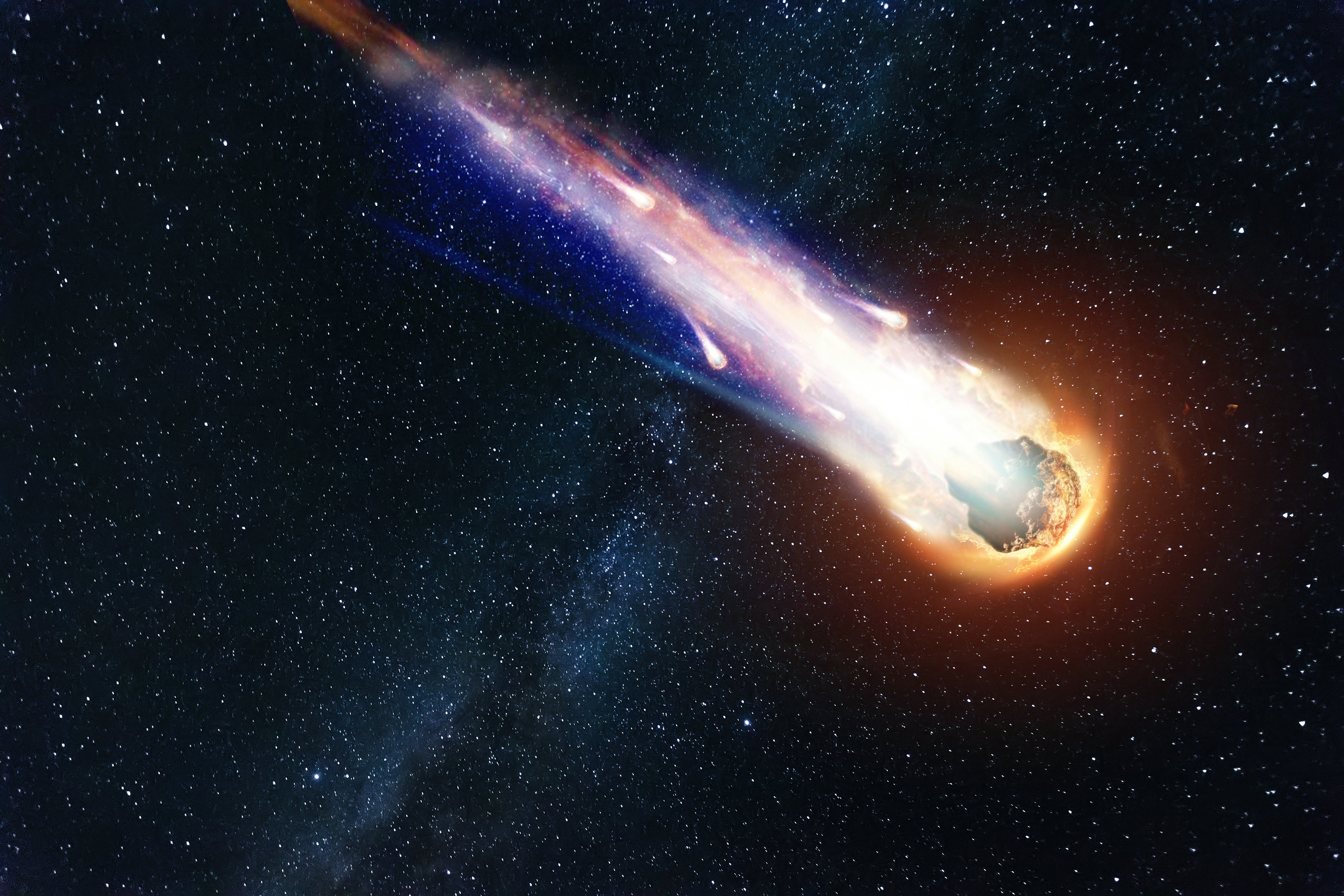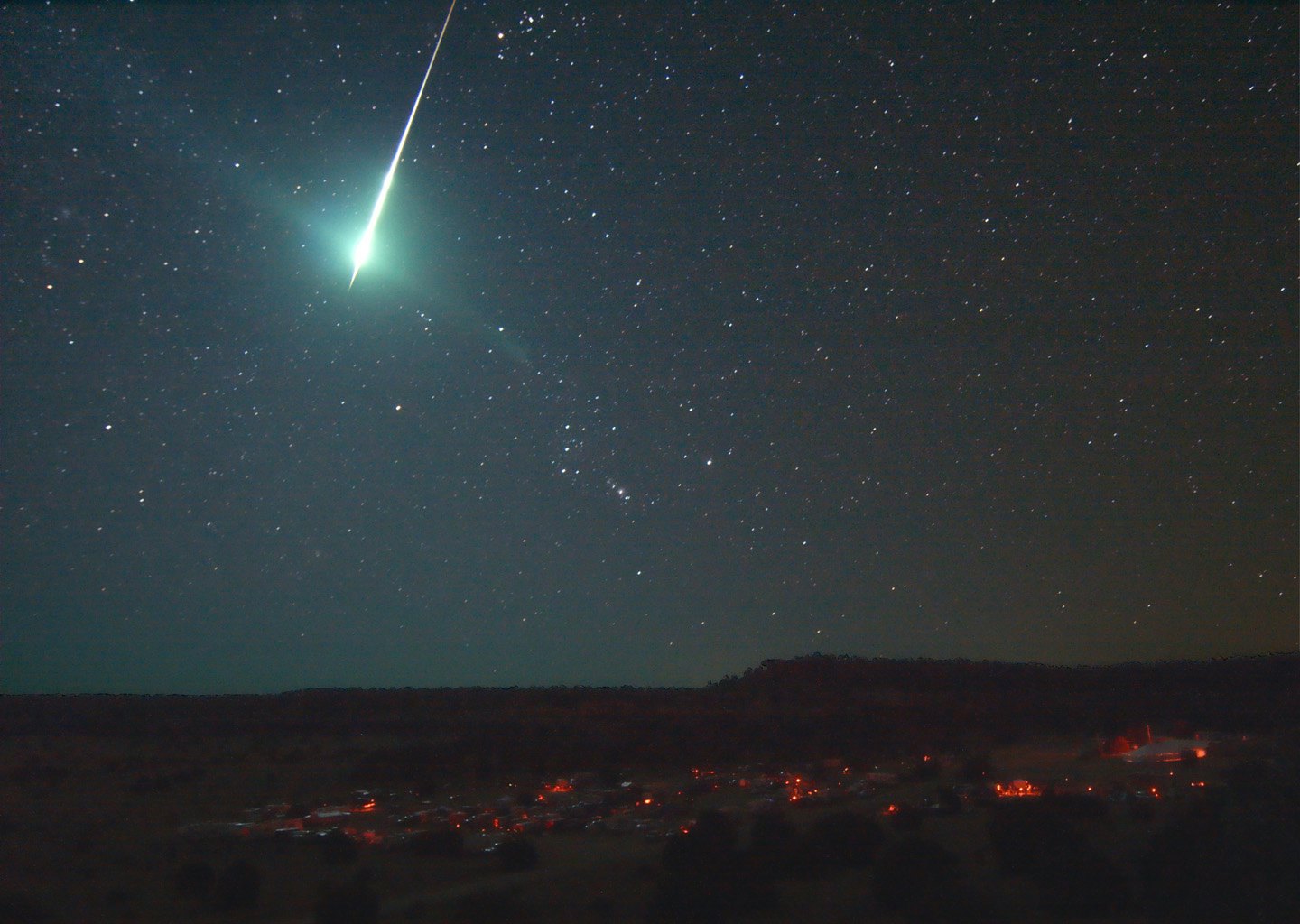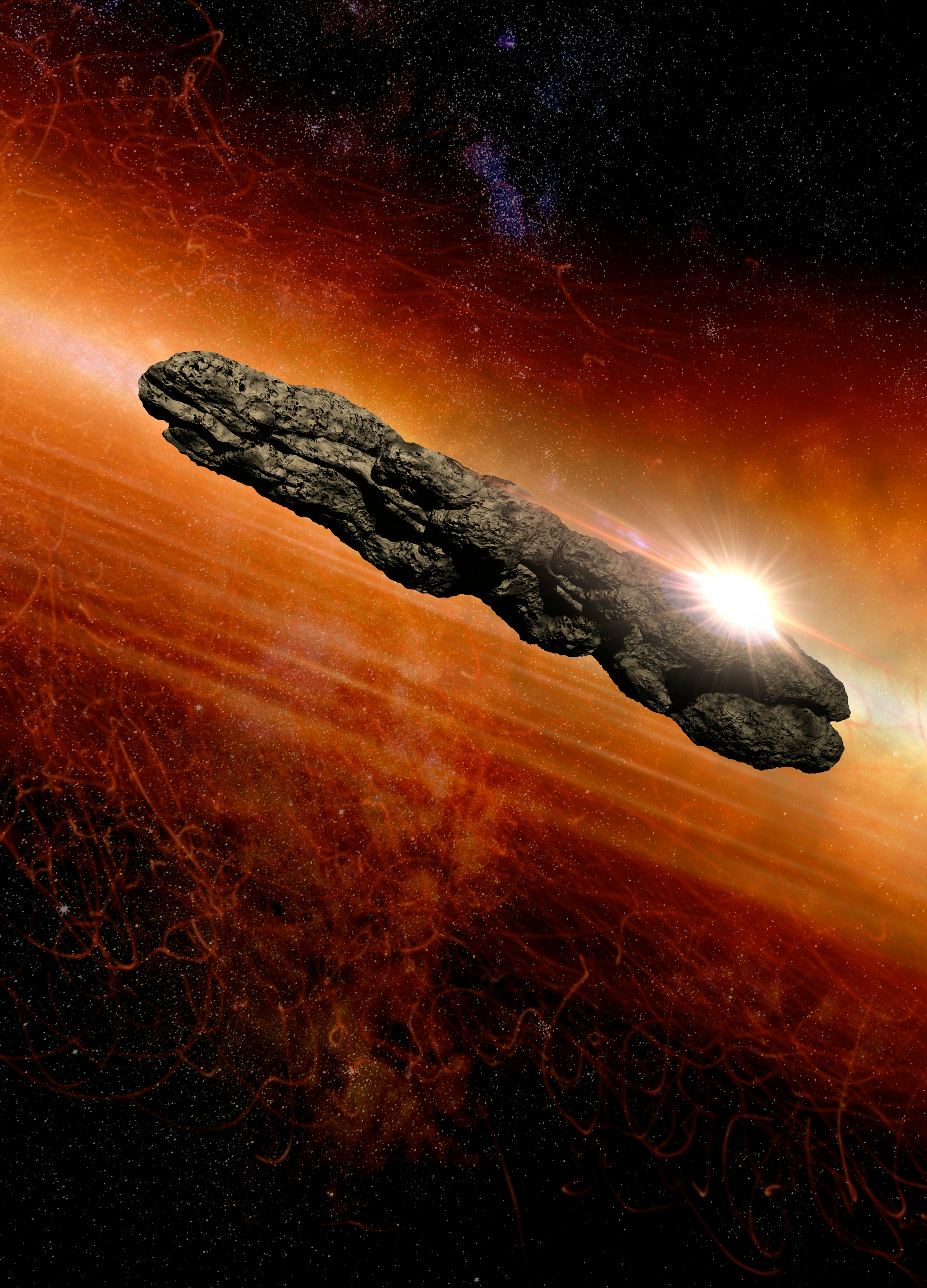
In 2014, a half-ton, couch-sized meteor entered the atmosphere above Papua New Guinea, brightening the night sky. While seemingly large, it posed no threat, mostly burning up in the atmosphere. This space rock caused a bright flash and bang captured on observatory cameras, but there are 25 million meteor entries of various sizes around Earth every day, so no one gave it a second thought. At first.
But Avi Loeb, a Harvard University astrophysicist, and his student Amir Siraj saw something else in that remote bolide explosion: Five years after the meteor appeared in 2019, they looked at the data on it from NASA JPL’s Center for Near Earth Object Studies. They saw something fast. They saw something powerful. They saw, in short, something from outside our Solar System. It was exactly what they were looking for.
“It appeared to be a head-on collision,” Loeb tells Inverse.
Loeb and Siraj made their discovery while on the hunt for fast fireballs, the kind of meteor that strikes our upper atmosphere at such a velocity that they could have hurtled in from interstellar space.
But nobody else saw what they did, and their paper on the object was rejected by the Astrophysical Journal Letters. Now, three years after their discovery, a letter from the United States Space Command to NASA chief scientist Thomas Zurbuchen relayed that Space Force had looked into their results: Loeb and Siraj’s measurements were seemingly correct.

Whatever space rock they had found in the data, it wasn’t from our Solar System. In other words, the Space Force may have conceded that Loeb and Siraj’s meteor, and not ‘Oumuamua (a now infamous object spotted in 2017), is the first detected interstellar visitor to Earth.
In a March 1, 2022 letter provided to Inverse, Lieutenant General John E. Shaw of the U.S. Space Force lays out to NASA’s Zurbuchen the new interpretation of Loeb and Siraj’s discovery:
“[...] Joel Moser, the Chief Scientist of Space Operations Command, the United States Space Force service component of U.S. Space Command, reviewed analysis of additional data available to the Department of Defense related to this finding. Dr. Mozer confirmed that the velocity estimate reported to NASA is sufficiently accurate to indicate an interstellar trajectory.”
A separate NASA press release dated April 7, 2022, to do with other meteor events also acknowledges the findings toward the end of the release, but NASA suggests it needs more evidence to come to a conclusion on the origins of the 2014 meteor.
“This [meteor] gained the interest of the scientific community as it has been posited it could have interstellar origin due to the detected event’s high velocity within the atmosphere,” the release states.
“Further analysis carried out under U.S. Space Command’s purview confirmed the object’s high-velocity impact, but the short duration of collected data, less than five seconds, makes it difficult to definitively determine if the object’s origin was indeed interstellar.”
That won’t stop Loeb from trying to get the rest of the science community to believe it. So far, many are still not ready to agree. Chris Lintott, a professor of astronomy at the University of Oxford, tells Inverse he was skeptical before and he is skeptical now.
“I wasn’t hugely impressed by the original arguments and I don’t understand why [Loeb] thinks U.S. Space Command would know more than, you know, any of the meteor experts who disagreed with him last time around,” Lintott tells Inverse.
“If [Loeb] would like to make claims about discoveries he can publish a paper with the evidence like everyone else.’”
Lintott points to a refutation of Loeb and Siraj’s claims published in a paper in Research Notes of the AAS.
“Note the last line which the blog ignores: Just because something is on an inbound trajectory, doesn’t mean it is interstellar,” he says.

Michele Bannister, a small Solar Systems object expert at the University of Canterbury, is also skeptical of the results — partly because of how little the object has been brought up to the scientific community. The Space Force letter in and of itself is also not a big enough backup, to her, to verify the claims.
“That doesn’t seem like a situation where an appeal to authority helps in evaluating a potential candidate,” Bannister tells Inverse. “I also haven’t seen this candidate brought to any scientific conferences for discussion.”
One problem, she says, is that finding trajectories of meteors in the atmosphere is very hard. Whereas an object like ‘Oumuamua can be tracked with enough time to figure out a trajectory, the Loeb and Siraj paper relies, for the most part, on the speed of the object.
A thorough analysis is also needed of the “strengths and weaknesses of the instrument” as it’s important “to (understand) its detection sensitivities,” Bannister says. Not all meteor cameras are going to be created equally — and weather and other factors can affect how well an object is captured. Without other observations, it can be hard to corroborate what happened across just a few sensors — or in this case the one that captured it.
There’s also another matter that both Bannister and Lintott bring up: Even if this is an interstellar meteor, it’s not the first. Lintott points to a 1996 Nature paper which mentions interstellar dust possibly entering Earth’s atmosphere, as well as evidence for debris clouds of interstellar just found near Jupiter. “The claim to be first is odd,” Lintott says. “Avi’s cited this in several recent papers so he must know about it.”
Bannister points to a fleet of previous candidates. A 2000 paper in the Journal of Geophysical Research: Space Physics alleged to find evidence for interstellar meteors, noting that their trajectory could place their origin at Beta Pictoris, a star 63 light-years away known to possess at least two exoplanets as well as large scale evidence of comets and debris disks, dust theorized to be associated with small bodies (like comets and asteroids) smashing into each other.
“That led to a burst of enthusiasm and refutation in the early 2000s,” Bannister says. In short, the evidence really wasn’t strong enough to decide whether the object was interstellar or not.
The Canadian Meteor Orbit Radar (CMOR)has also made a few claims. In 2005, a paper provided to a Workshop on Dust and Planetary Systems of the Lunar and Planetary Institute claimed 40 candidates based on radar measurements.
The CMOR also published a paper in Planetary and Space Science in 2020 claiming to have found several objects between 2012 and 2019. These claims came after “truly exhaustive analysis,” finding, “several potential candidates, with careful caveats,” Bannister says. That paper found five total candidates. That paper also found that CMOR finding an interstellar meteor via its six ground radar instruments would depend on the direction the meteor seemed to be coming from and the instrument lining up just right.
While some of the claimed objects might be quite a bit smaller than what Loeb envisions, most meteors are themselves quite small. A meteor shower produces several visible fireballs as Earth enters a debris cloud, but most of the debris is the size of a grain of sand, still hitting the atmosphere fast enough to light up.
Are some interstellar meteors artificial?
Loeb is a preeminent astronomer and recently co-authored a new paper on the most-distant galaxy ever observed. But he also has a deep interest in interstellar objects coming close to Earth — particularly because they may be signs of extraterrestrial life.
His interest became particularly obvious when ‘Oumuamua, an interstellar object, was discovered by Robert Weryk at the Haleakalā Observatory in 2017. Astronomers noticed the asteroid’s strange orbit and realized it had originated outside our Solar System.
Around December 2017, Loeb asked the Green Bank Observatory in West Virginia to tune in to ‘Oumuamua and listen to see if it was transmitting signals. Both the observatory and the SETI Institute, which is dedicated to searching for signals of extraterrestrial life, found nothing.
Yet in October 2018, Loeb published a paper arguing that ‘Oumuamua’s unusual acceleration suggests it is probably an artificial object. He goes further into this idea in a book published in 2021, Extraterrestrial: The First Sign of Intelligent Life Beyond Earth.
“Either it’s natural in origin, or it’s artificial — from another civilization.”
In early 2022, Loeb announced the Galileo Project with the stated goal of bringing “the search for extraterrestrial technological signatures of Extraterrestrial Technological Civilizations (ETCs) from accidental or anecdotal observations and legends to the mainstream of transparent, validated and systematic scientific research. This project is complementary to traditional SETI, in that it searches for physical objects, and not electromagnetic signals, associated with extraterrestrial technological equipment.” (I.E. A search not just for alien life, but alien craft.)
It is possible, Loeb says, that the object he spotted in the data all those years ago has an interstellar origin and that may mean it was made by something.
“Given that this is interstellar, there are two interesting possibilities,” Loeb says. “Either it’s natural in origin, or it’s artificial — you know, from another civilization.”
One way to tell the difference between the two would be to find a fragment of the meteor. Because of its size and density, it’s likely that small fragments could have survived and fallen onto Papua New Guinea. A meteorite (a chunk of the meteor that falls to Earth) is easy enough to identify — because they are often broken off chunks of asteroids, they’re dense and metallic, and the most durable fragments are what are able to survive an atmospheric entry.
Finding a fragment could confirm if it were an interstellar asteroid (the chemical abundances would be off from those in our Solar System) or artificial (unnatural metal alloys or something similar). But that hinges on finding a fragment. Papua New Guinea is part of the larger island of New Guinea, the western half of which is under the control of Indonesia. That’s a large area to look through to find a small scattering of fragments, which could have fallen anywhere.
There’s also the chance fragments landed in the Pacific Ocean, which would make them hard to retrieve. There may also be no fragment — the whole thing could have burned up in the atmosphere.
It’s all a lot of ifs. What we do know: Something entered our atmosphere on January 8, 2014. It was big and flashed bright and exploded in our atmosphere. It was heavy. Space Command seems to think, with 99.9 percent certainty, that it was interstellar in origin. NASA is less sure.
If confirmed, that would make it the first interstellar object ever observed, and only the third confirmed interstellar object. It would also be the first interstellar object known to have collided with Earth rather than passed peacefully by like ‘Oumuamua or 2I/Borisov.
Armed with new affirmation, Loeb plans to resubmit his 2019 paper to peer review for publication in an academic journal. Loeb hopes it will create more opportunities to discover more objects like this, maybe even finding fragments.
“Maybe there are more in existing catalogs, more meteors that we can identify,” Loeb says. “I think it opens a new frontier where you’re using the Earth as a fishing net for these objects. And that makes it very exciting.”
But is it aliens? Too soon to say.
This post was updated on April 15, 2022 to include comments from Michele Bannister, who cited several other interstellar object candidates.







